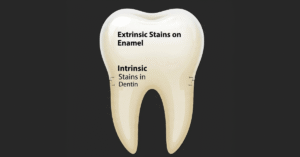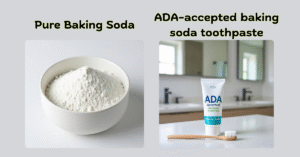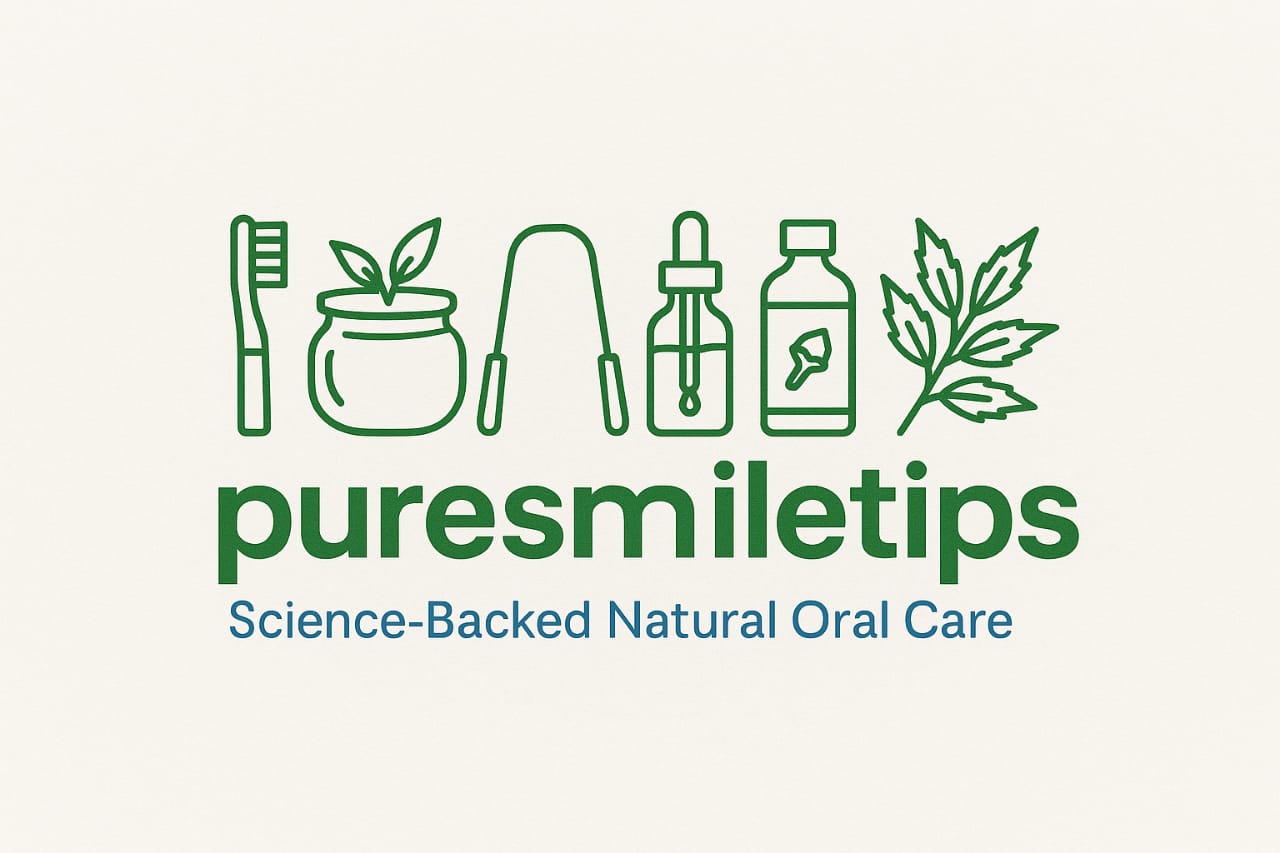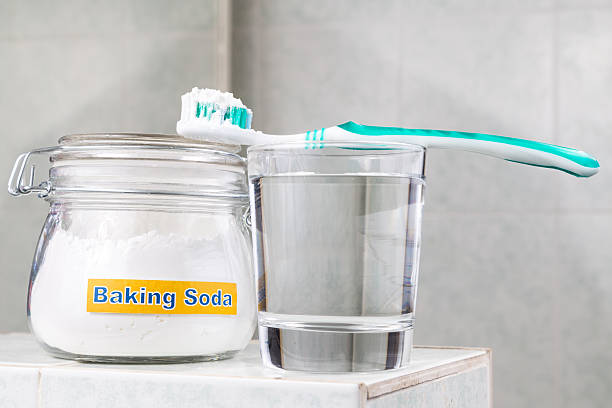If you’re looking for a cost-effective way to brighten your smile, you’ve likely asked: can Baking Soda Whiten Teeth? The answer is yes. But before you mix that paste for a session of homemade teeth whitening with baking soda, there are several critical, dentist-approved truths you need to know.
If you’re wondering if baking soda whitens teeth, the answer is yes, but with a major caveat. While this household product can effectively remove surface stains, it’s very easy to use it in a way that does more harm than good. We’ve listed seven safe, tested, and dentist-approved facts to help you separate the beneficial truths from the potentially harmful fiction.
The Verdict on Baking Soda and Teeth Whitening
Nevertheless, its widespread appeal in DIY cultures can be disregarded of the subtle reality of its application. In this case the final decision is not so straightforward as yes or no, but rather how, when, and how many times. In this paper, we will take you through the seven essential truths based on the dental knowledge to make your trip to a brighter smile successful and safe.

Understanding the how and why is the first step. Let’s dive into the first and most important truth about what baking soda can and cannot do.
Truth #1: It Works on Surface Stains, Not Deep Discoloration
A common question we hear is, “Can baking soda remove yellow teeth?” The answer is crucial and depends entirely on the type of yellowing you’re dealing with. The ability of baking soda whiten teeth is limited to surface-level cleaning; it is not a miracle worker for intrinsic discoloration.
What it’s good for (Extrinsic Stains): This is precisely how using baking soda whiten teeth works on extrinsic stains. The coarse particles in baking soda act as a gentle abrasive, physically scrubbing away stain-causing residue from coffee, tea, red wine, and tobacco from the outer enamel. This process reveals your tooth’s naturally whiter surface underneath.
What it can’t fix (Intrinsic Stains): These are stains that occur within the tooth structure itself. Baking soda works by cleaning stains off the surface of your teeth. However, it doesn’t have a bleaching effect to change your tooth’s underlying shade
Analogy: Imagine a white countertop with a coffee ring. Baking soda is safe to clean the ring. It’s counter safe.

Truth #2: Safety Hinges on Your Technique and Enamel Health
The most controversial issue with baking soda is not whether it works or not, but whether it is safe or not. The two most important factors are the risk nearly completely relies on are the way you use it and the condition of your enamel.
Is Brushing with Baking Soda Bad for Your Teeth?
Understanding the Potential Side Effects
When considering baking soda for teeth whitening, side effects are the most critical factor to understand. The primary risks aren’t from baking soda itself, but from its misuse, which primarily revolves around two key issues: enamel erosion and subsequent sensitivity.
- Enamel Abrasion: While the American Dental Association (ADA) considers baking soda a safe, low-abrasive ingredient, its abrasive potential (Relative Dentin Abrasivity or RDA) increases significantly when used in a concentrated, dry, or overly aggressive manner.
Tooth Sensitivity: This is a direct consequence of enamel erosion. Dentin is a honeycomb-like layer. This worn enamel exposes the dentin layer, creating a direct path for temperature changes to stimulate the nerve.
Therefore, any discussion of baking soda for teeth whitening side effects must highlight sensitivity as a common outcome of compromised enamel.
The Critical Importance of Enamel
Your enamel is your teeth’s shield. Compromising it for a whiter smile is a losing battle, especially when using harsh methods. While many hope baking soda whiten teeth, the irony is that using it aggressively can thin your enamel. Thinned enamel not only causes sensitivity but can also make your teeth look duller. Your teeth have a natural white shield. When this shield gets thin, the yellow layer underneath starts to show. If you’re concerned about enamel health, learning how to remineralize the enamel is the most important step you can take.
Are you already sensitive in your enamel? Schedule a check-up with your dentist to assess its health before trying any at-home whitening regimen, including baking soda.

Truth #3: It works slowly and gently over time.
The answer to ‘does baking soda whiten teeth?’ is a test of patience in our world of instant gratification. It works slowly over time.
How Fast Does Baking Soda Whiten Teeth?
It can cause a little difference in the first use, which means that real, significant results are achieved only a few weeks of proper regular usage. Studies, including one published in the Journal of the American Dental Association, have shown that toothpaste containing baking soda can remove surface stains more effectively than non-baking soda toothpaste over a period of 4 to 6 weeks.
Can You See Results in One Day?
Having your teeth whitened in a day is a recipe of disappointment and possible damage. Anyone who promises to deliver dramatic results in a one-day period is probably selling unsafe, overly abrasive techniques. See a difference immediately, but the brightest smile appears with consistency.
For a faster, yet still safe, result, look for an ADA-approved whitening toothpaste that contains baking soda and peroxide, which combines gentle abrasion with a mild chemical whitening action.
Truth #4: Truth number 4: It Depends on How You Use It
Using baking soda safely boils down to your technique. To answer the common question, “how often can you use baking soda on teeth?”—the solution is gentle and infrequent.
The safe and easy way to brush it on
Follow these steps for the best way to use baking soda for teeth without causing harm:
Create a Paste: Mix a very small amount of baking soda (about half a teaspoon) with enough water to form a creamy paste. Water goes in first.
Use a Soft-Bristled Brush: Always apply the paste with a soft-bristled toothbrush. A hard brush is too rough for your mouth. It can scrape your gums and scratch your teeth’s surface, using a gentle technique is crucial to protect your gums from long-term damage.
Brush Gently: Use gentle, circular motions for no more than two minutes. Scrub lightly.
Rinse Thoroughly: Spit out the paste and rinse your mouth and brush completely.
Follow with Regular Toothpaste: It’s a good practice to follow up with your regular fluoride toothpaste to help remineralize the enamel.
How Often is Safe? The Dentist-Recommended Frequency
A key part of the best way to use baking soda for teeth is knowing that less is more. Dentists universally recommend using a pure baking soda paste sparingly—no more than 1-2 times per week. Using it more frequently significantly increases the risk of enamel erosion.
For daily use, a commercial toothpaste that contains baking soda as one ingredient among many is a far safer and more effective option. These products are specifically engineered with the correct abrasiveness and include essential ingredients like fluoride.

Truth #5: Not All Baking Soda Products Are Created Equal
You have two main choices: a DIY paste or a commercial baking soda toothpaste for whitening. The latter is nearly always safer and more convenient to use on a normal basis. The distinction is essential to know whether to preserve your enamel or not and effectively eliminate stains.
The table below provides a clear, direct comparison to help you make an informed choice:
| Feature | DIY Baking Soda Paste | Commercial Baking Soda Toothpaste |
|---|---|---|
| Enamel Safety | ✗ High risk if used incorrectly | ✓ Formulated for safe daily use |
| Whitening Effectiveness | ✓ Good for surface stains only | ✓ Enhanced with additional whitening agents |
| Cost | ✓ Very inexpensive | ✓ Affordable with added value |
| Fluoride Content | ✗ None (unless added separately) | ✓ Usually contains fluoride |
| ADA Approval | ✗ Not evaluated or approved | ✓ Often carries ADA Seal of Acceptance |
| Convenience | ✗ Requires preparation and mixing | ✓ Ready to use immediately |
| Recommended Use | 1-2 times per week maximum | Daily use (as directed) |
The Verdict: Trust the Formulated Product
While a DIY paste has its place for occasional, careful use, a commercial baking soda toothpaste for whitening is the unequivocally smarter choice for daily care. These products are the result of extensive research and development, specifically formulated to deliver the stain-lifting power of baking soda without compromising your enamel’s health. Fluoride makes teeth stronger. A harder surface is much stronger at resisting decay and cavities.
In the event of a doubt, go with science rather than simplicity. Look for the ADA Seal of Acceptance on a baking soda toothpaste for whitening, which independently verifies its safety, efficacy, and that it does what it claims to do.
Truth #6: It is a Chevy Starter, Not a Professional Engine.
When considering how to brighten your smile, it’s crucial to understand that baking soda vs professional teeth whitening isn’t a simple choice of one being “better” than the other.
Instead, they are fundamentally different tools designed for different jobs and budgets. Think of it as the difference between a reliable at-home cleaning solution and a powerful, clinical-grade treatment.
The following comparison breaks down the key distinctions to help you make an informed decision.
| Feature | Baking Soda (At-Home) | Professional Teeth Whitening |
|---|---|---|
| Primary Action | Gentle abrasion; physically scrubs away surface stains. | Chemical bleaching; uses peroxide to lighten the intrinsic tooth color itself. |
| Type of Stains Treated | Extrinsic only: Coffee, tea, wine, tobacco. | Both Extrinsic & Intrinsic: Surface stains and deeper, within-the-tooth yellowing. |
| Key Ingredient | Sodium Bicarbonate (Abrasive) | Hydrogen Peroxide or Carbamide Peroxide (Bleaching Agent) |
| Speed of Results | Gradual (4-6 weeks with consistent use) | Rapid (Often visible in a single 1-hour appointment) |
| Degree of Whitening | Mild to moderate brightening; reveals your tooth’s natural shade by cleaning it. | Dramatic, can lighten teeth by several shades. |
| Cost | Very low | High |
| Risk & Sensitivity | Low when used correctly 1-2 times per week. Risk is primarily enamel abrasion from overuse. | Higher potential for temporary tooth sensitivity, which is managed by the dentist. |
| Supervision | At-home, self-applied. | In-office, performed or supervised by a dental professional. |
| Ideal Use Case | Maintenance after professional whitening, removal of new surface stains, cost-effective brightening. | A significant, fast color change for a special event or to correct deep-seated discoloration. |
The Final Verdict of the Comparison
The choice in the baking soda vs professional teeth whitening debate comes down to your goals:
Choose Baking Soda for: Maintenance and managing minor, daily staining on a budget.
Choose Professional Whitening for: A transformative, fast, and significant color change that changes the actual shade of your teeth. For official safety guidelines and information about professional teeth whitening from the UK’s National Health Service, this resource explains why dental-supervised treatment is of gold standard.
Ultimately, baking soda can serve as an excellent maintenance tool to prolong the results of professional whitening, but it will never be able to match the strength or speed of a professional-grade bleaching gel activated by a special light.
Ready for a dramatic change? Book a consultation for professional whitening to discuss your goals and get a smile that’s several shades brighter in a single appointment.
Truth #7: The Biggest Risk is Damaging What You’re Trying to Whiten
This truth brings us full circle. The final irony of using baking soda wrongly in your quest to baking soda whiten teeth is that in attempting to brighten your smile permanently, you are destroying what you are trying to make bright. Eroded enamel leads to:
Permanent tooth sensitivity.
Increased risk for cavities.
A darker appearance as yellow dentin shows through.
A higher likelihood of chips and cracks.
Whitening is not a technique to spend this amount of money at home. It is a healthier and brighter smile, not a whiter but a compromised one.
Your oral health in the long term is invaluable. The question to ask yourself when looking at any form of whitening treatment is: is it the one that dental experts recommend? Share this article with a friend who might be considering a risky DIY whitening hack.
Frequently Asked Questions
1. Does baking soda whiten teeth permanently?
No, the whitening effects of baking soda are not permanent. It works by gently scrubbing away surface-level stains (extrinsic stains) from coffee, tea, or wine, as explained in Truth #1. However, it does not change the intrinsic color of your teeth.
Because new stains will inevitably build up from eating and drinking, the results are temporary. This is why baking soda is best viewed as a maintenance tool, as discussed in Truth #6, to help keep stains at bay between professional cleanings.
For a longer lasting and more dramatic whitening effect that alters the tooth’s underlying shade, professional treatments from a dentist are the recommended and effective solution, as baking soda whiten teeth only on the surface.
2. How long does it take to whiten teeth with baking soda?
It is possible to get a small amount of stain removal after the first application, but visible baking soda whiten teeth results normally require 4-6 weeks of regular application of a baking soda toothpaste 1-2 times a week. This gradual process is how it safely removes surface stains without causing damage.
3. Is it harmful to brush teeth with baking soda?
It can be if used incorrectly. Using it too often, in a dry form, or with a hard-bristled brush can wear down tooth enamel, leading to sensitivity and increased cavity risk. Just use a small amount. There is no risk.
4. Can baking soda whiten teeth in one day?
No. Baking soda is a natural teeth brightener. The slightest alteration following a single application would be a little polishing action, not actual whitening. Offers that claim baking soda whiten teeth in one day are very deceitful.
5. How often should I use baking soda to whiten teeth?
For a safe way to baking soda whiten teeth, use a toothpaste with baking soda. In so doing, you obtain the advantages, minus the dangers of plain baking soda.
6. What’s the difference between baking soda and baking powder for teeth?
Don’t confuse them! For your teeth, only use plain baking soda. Baking powder has extra chemicals that can hurt the protective surface of your teeth.

Conclusion: The Final Takeaway
So, does baking soda whiten teeth permanently? The clear answer is no. Baking soda is an effective solution for removing surface-level stains, but it does not alter the intrinsic, underlying color of your teeth. Any whitening it provides will require ongoing maintenance.
The seven dentist-approved truths highlight that for a truly brighter, healthier smile, baking soda is best used as an occasional maintenance tool. However, if you’re looking for more significant results while still using safe, natural methods, we highly recommend exploring these 12 proven hacks to whiten teeth naturally fast.
The ultimate takeaway is to always prioritize protecting your enamel. For a lasting, significant color change, professional treatments overseen by a dentist are the only path to semi-permanent results.
Love your smile again? Find a certified dentist near you to discuss the best, safest, and most effective whitening options tailored to your unique teeth.

